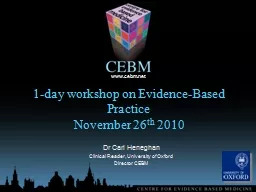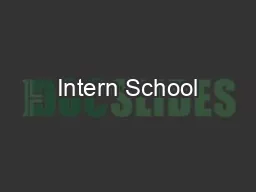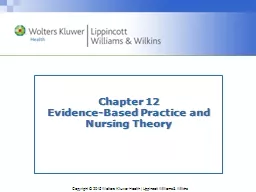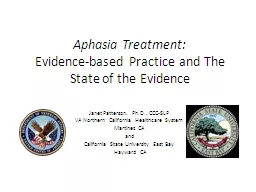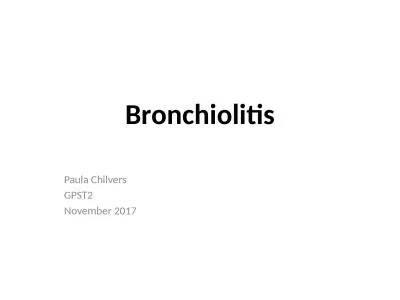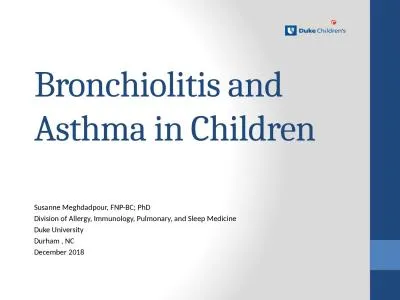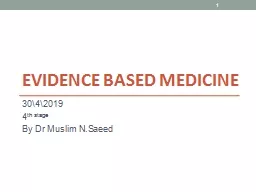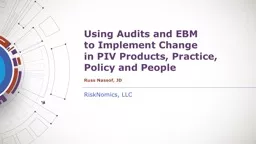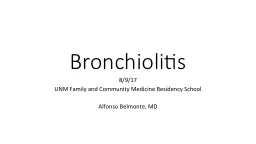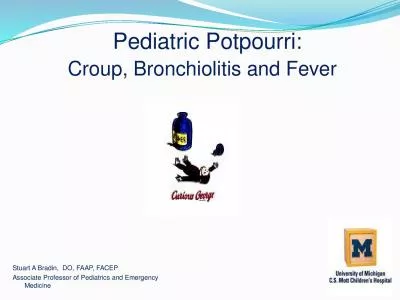PPT-Bronchiolitis Clinical Practice: An Evidence-Based Approach
Author : jane-oiler | Published Date : 2019-11-22
Bronchiolitis Clinical Practice An EvidenceBased Approach William Schneider DO MA FACEP Medical Director Pediatric Emergency Services Banner Thunderbird Medical
Presentation Embed Code
Download Presentation
Download Presentation The PPT/PDF document "Bronchiolitis Clinical Practice: An Ev..." is the property of its rightful owner. Permission is granted to download and print the materials on this website for personal, non-commercial use only, and to display it on your personal computer provided you do not modify the materials and that you retain all copyright notices contained in the materials. By downloading content from our website, you accept the terms of this agreement.
Bronchiolitis Clinical Practice: An Evidence-Based Approach: Transcript
Download Rules Of Document
"Bronchiolitis Clinical Practice: An Evidence-Based Approach"The content belongs to its owner. You may download and print it for personal use, without modification, and keep all copyright notices. By downloading, you agree to these terms.
Related Documents


